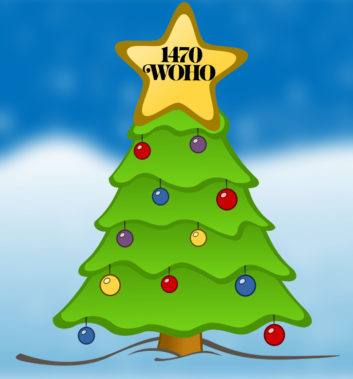 As a loyal Radio World reader you are entitled to something more than the mere rantings of a third-tier ex-disc jockey. Thus I’m going to share with you the coolest Christmas event we ever ran during my so-called radio career. Feel free to steal it!
As a loyal Radio World reader you are entitled to something more than the mere rantings of a third-tier ex-disc jockey. Thus I’m going to share with you the coolest Christmas event we ever ran during my so-called radio career. Feel free to steal it!
Today, many stations might be tempted to tie this promotion in with some politically correct charity such as the free shoes program for underprivileged Albanians. Some stations will try to share it with the other 300 stations in their chain and together give away one trip to watch Leonardo DiCaprio’s jet spew carbon emissions all over the world. None of that is necessary. The beauty of this idea is its simplicity.
In the ’60s and ’70s you may remember an inexpensive device called a color organ. You could buy one in kit form from Radio Shack for about $12. The basic part was a frequency splitter, though it was often installed inside a speaker-like box with a fogged plastic front and multicolored lights on the inside which lit at select frequencies, creating a light show on the plastic panel.
With a little patience you could connect it to a radio under your Christmas tree and drive a string of holiday lights, watching the bulbs respond to the different frequencies in the music. In our case bass tones triggered blue lights, mid-tones caused the green lights to pulse and high notes made the red lights blink. Now I don’t know anything about this first-hand but I heard that if one were stoned this was a very special treat to watch.
Far out, man!
At WOHO(AM), Toledo, Ohio, we had a gifted engineer, Bob Sowers, who did this on a larger scale. He connected a color organ to a radio, and ran the audio into a string of 150 large outdoor display lights.
[Read: Adventures in 1970s Radio: How Desperate Was I?]
Once he got it to work, we could put our plan into action. After receiving permission from a local strip mall we erected a 40-foot blue spruce tree in its parking lot about two weeks before Christmas, and hired a cherry picker to drape our lights over the entire tree. At the base of the spruce was a locked box that contained a radio that was hard-wired to receive our station. Our air signal was sent to the lights via the color organ. We also blasted WOHO through some PA speakers near the tree. Every night we sent someone over to turn on what we dubbed “The WOHO Carol Tree” at sunset.
It was magic.
The public turned out by the thousands to sit in the dark, listen to our station on their car radios in the parking lot and watch the colorful pulsing lights with fascination. Guys took their girlfriends there to make out; parents took their kids because it was cheaper than a drive-in movie. Every evening from sundown until about midnight, for several winters in a row, ours was the hottest ticket in town.
One song in particular, “Green Tambourine” by the Lemon Pipers, had a pulsing drumbeat that was memorable to witness in living color. Our jocks were aware of this and played the song every hour because it drove the crowds wild. Even commercials were fun to “watch.”
I think the tree cost the station about $400. The crane rental and construction of the lights (which could be stored and used again) was about $450. Permission from the shopping center: free.
It was a groovy way to celebrate the season so I shout: on, Donder, on Sneezy, on Zeppo! And a free-range, gluten-free Christmas to you all!
Ken Deutsch was a DJ in the days of three Bs: bubblegum, Beach Boys and Beatles. He is now a closed-caption transcriber and advocate for the deaf/hard of hearing.










